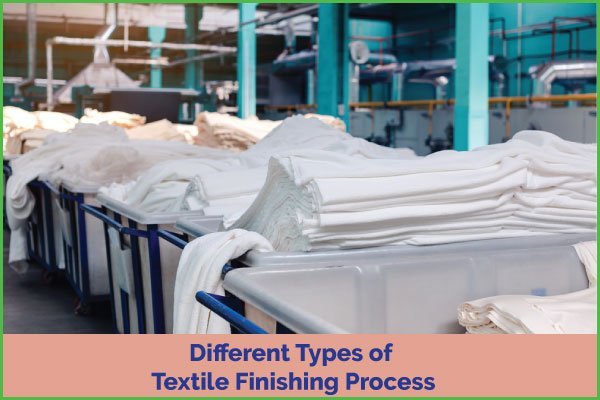An Overview of Sizing, De-sizing, Scouring, Bleaching and Mercerizing
Last updated on July 26th, 2023 at 12:15 am
We know textile is a vast sector; it is not confined within a specific limit because it has limitless end-used items. Textile mainly deals fibres – maybe these are natural or synthetic. Whatever may be the fibres, it is well known, to all apart from its fibre stage to finishing stage (end-use stage), it involves in a lot of successive intermediate processing stages and for which in every step of processing there is much involvement of valuable machinery from root level to finishing level. Among the middle stage, a few like Sizing, De-sizing, Scouring, Bleaching, and Mercerizing I like to discuss here for your initial idea.

Sizing is one of the Pre-activities of ultimate weaving activities, and we know that the end product of weaving is gray fabric. So previous to weaving, the warp threads will have been brought to gather side by side, just as they will be in the fabric and wound on a beam (roller). Of course, the length of these threads must be approximate to that of the fabric which it is intended to weave after making some shrinkage allowances; of course, for having complete woven fabric, it is a must to have weft threads.
So that warp yarns may not break during weaving, they are previously strengthened by coating them with a thin film of paste and is called it ‘size’, which is usually a starch paste containing softening and other ingredients and then dried. The process adopts for ‘sizing’ activities. Starch sizes are usually replaced by special sizes (often containing synthetic polymers), which will adhere to the threads. Maize, wheat, etc., are used as a starch sizing material.
De-sizing
‘Desize’ means removal of size material in some way which was added to the warp threads during sizing and the process involved for removing size material (prior to dyeing) is called ‘de-sizing. Desizing along with singeing is the last step of wet processing in the case of woven dyeing and this singeing and desizing occurred in the same machine and maybe included this process within the pretreatment process. It is noted here that no need for such singeing and desizing in case knit dyeing process.
It is quite inevitable to remove the size material before dyeing as its presence during uniformity. So, for desizing process is for the removal of starch impurities, a special treatment is done in a singeing and desizing machine with the arrangement of special ‘mangle and trough’ arrangement in the presence of starch liquefying enzymes and is mainly applied to cotton and rayon fabrics.
Here one thing is noted that desizing occurs immediately after completing singeing operation. So we should know here what is singeing? Singeing is a burning treatment over the whole sheet of fabric by means of which projecting the hairy fibre of fabrics is to be burnt out by passing the fabric over the burning flame placed the burner across the whole width of the fabric.
After singeing operation, fabric leaves singeing zone and can be saturated. Not with water, but with the enzyme liquor. Rapid action enzymes are now available. After lying for about 2 hours, all the starch in the fabric will be soluble so that it just remains to give the fabric a thorough work and get ready for the following process.
Scouring
Scouring is almost invariably the 2nd wet process (an increase of woven) applied to textile materials immediately after completing singeing and desizing operation as singeing and desizing operation fails to remove oils and fats waxes and some soluble impurities present in the textile material. So, before dyeing, the scouring process is a must; otherwise, uniform dyeing and desired dyeing result cannot be obtained at all.
So, scouring may be defined as a process that can remove oils, fats, waxes, soluble impurities, or any solid dirt adhering to the fibres/fabric quickly from the fibres /fabrics.
The process consists essentially of treatment with a detergent or without the addition of alkali with oils, fats, waxes, and soluble impurities except for cellulose (cellulose means cotton fibre) as cellulose is not affected by prolonged boiling with NaOH solution of concentration up to 2% and this makes it possible to remove all the impurities other than natural coloring matters.
The scouring process may be in a continuous or discontinuous form in the presence of alkali at a temperature of about 100C under atmospheric pressure for about 3 to 4 hours—more time required in the unsteady compared to a continuous process.
Bleaching
Scouring removes all the impurities other than the coloring matter from the natural cellulose fibres. The scouring process is not reasonably sufficient for removing the coloring or buff coloring material from the fiber. The removal of these natural colors is only possible by bleaching treatment on the fibre. Redwing treatments are pretty ineffective for bleaching, and oxidizing agents are therefore always used. Bleaching powder is one of the most and well-known powdery substances used for the bleaching process.
Bleaching powder is the mixture of Ca(OCl)2, Ca(OH)2, H2O. The chlorine ion of bleaching powder acts as a potent oxidizing agent that takes part in bleaching action and for which the natural coloring matter of celluloses is removed successfully.
We can say here that the process employing which the natural coloring matter is removed from the celluloses is called bleaching. Bleaching is a definitive treatment to complete the purification, which at the same time ensures the production of good white color.
Fabrics are more conveniently treated by a process in which they are saturated with the bleach liquor and allowed to lie in a cistern for 2 hrs to give the bleach liquor time to produce a good white. They are then thoroughly worded, slightly acidified, and again warred to remove all the bleaching liquor traces.
Mercerization
Mercerization is a process in which the cotton material is treated with a robust caustic soda solution for about one minute or less, followed by washing out of this alkali under conditions such that the cotton is stretched to prevent it shrinking. If the cotton is allowed to shrink, then there is no increase of luster. Still, only thickening and rounding of the individual fibres with an accompanying shortening yarn or a closing up of the fabric, according to which type of material is being treated So, Mercerization is a beneficial method for giving cotton yarn and fabrics a high luster which has the unique advantage of being permanent.




Hi, I followed a link to your blog and I like this post a whole lot. You make some compelling points. Where can I learn more?
you have a fantastic weblog here! do you want to develop invite posts on my own blog?